LONDON. In concomitanza con il centenario della nascita di William Burroughs, The photographers Gallery ospiterà fino al 30 marzo la mostra “Taking shots”. In mostra oltre 100 opere, prevalentemente in bianco e nero tra cui molte rare e inedite ma anche scatti d’epoca, collage e assemblaggi con cartoline, riviste, copertine di libri e annunci.
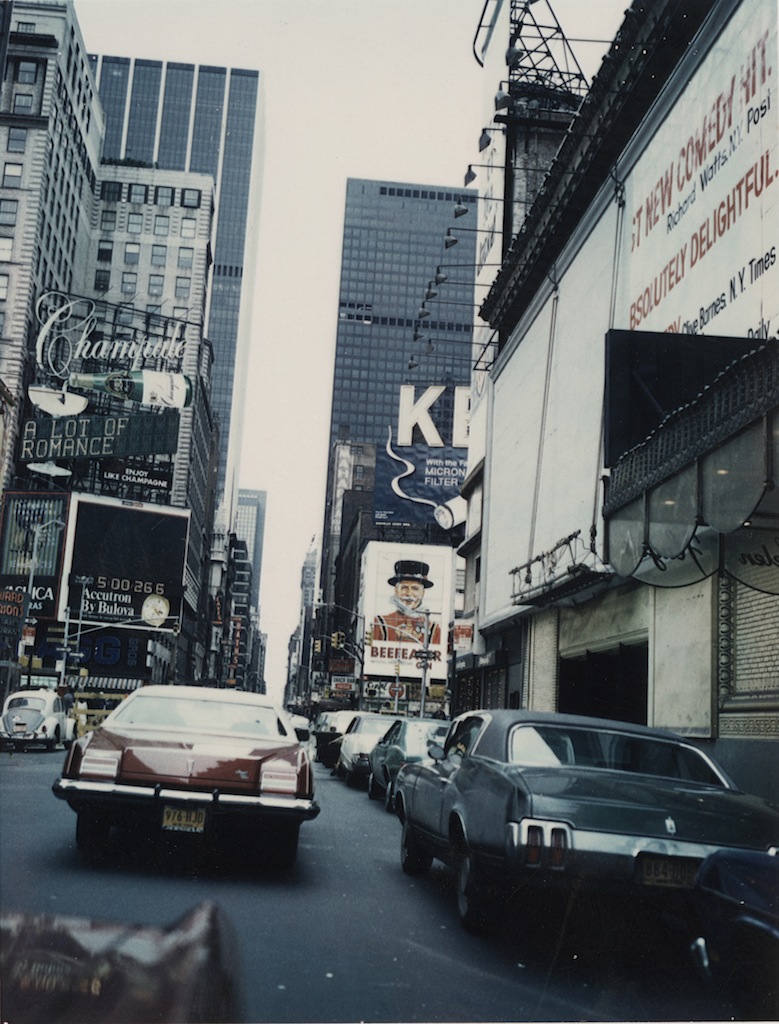
Midtown Manhattan, 1965
C-type print, 7.3 x 5.9 cm
© Estate of William S. Burroughs Courtesy of the Barry Miles Archive
Le fotografie esposte sono state scattate principalmente tra i primi anni Cinquanta e Settanta, in città come Londra, Parigi, New York e Tangeri in cui Burroughs ritrasse scene di strada, interni domestici intimi, cantieri ma anche autoritratti e veri e propri ritratti di colleghi scrittori e artisti come Jack Kerouac, Allen Ginsberg e Brion Gysin.
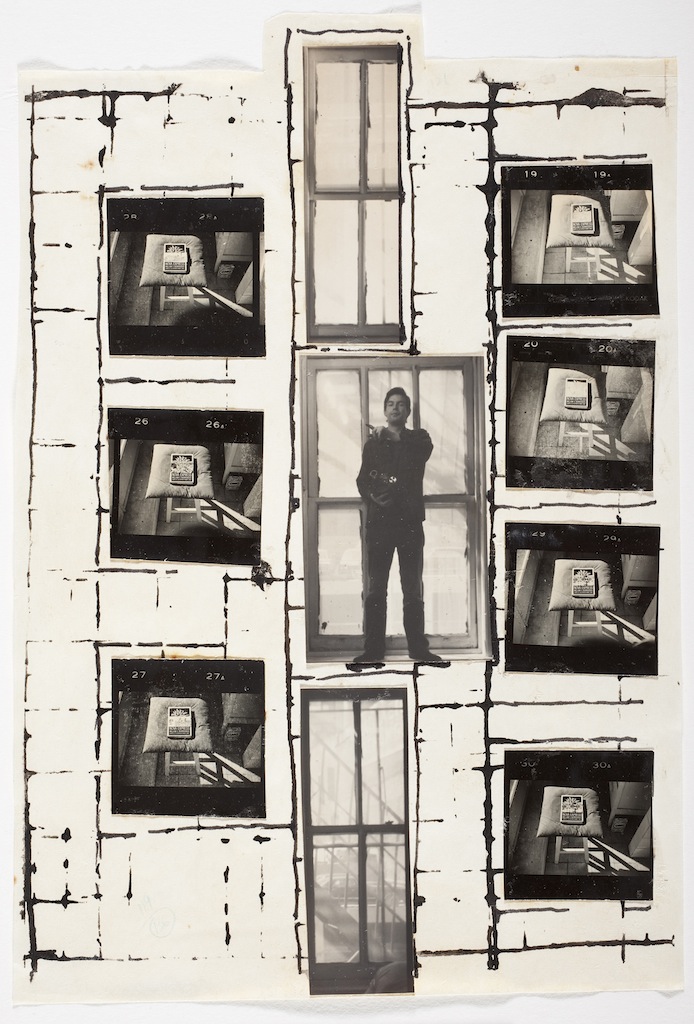
Untitled, 1965
Silver gelatin prints and ink on paper, 25.4 x17.15 cm © Estate of William S. Burroughs
Courtesy of the Los Angeles County Museum of Art
Burroughs era uno scrittore ma usava la fotografia come strumento di ricerca e mezzo di sperimentazione estetica. Trasformate e usate come oggetti usa e getta, le fotografie rappresentano il suo stato animo ma anche il suo stile di vita nomade. A confermarlo anche il fatto che molte delle sue fotografie sono segnate e graffiate, non titolate né datate.
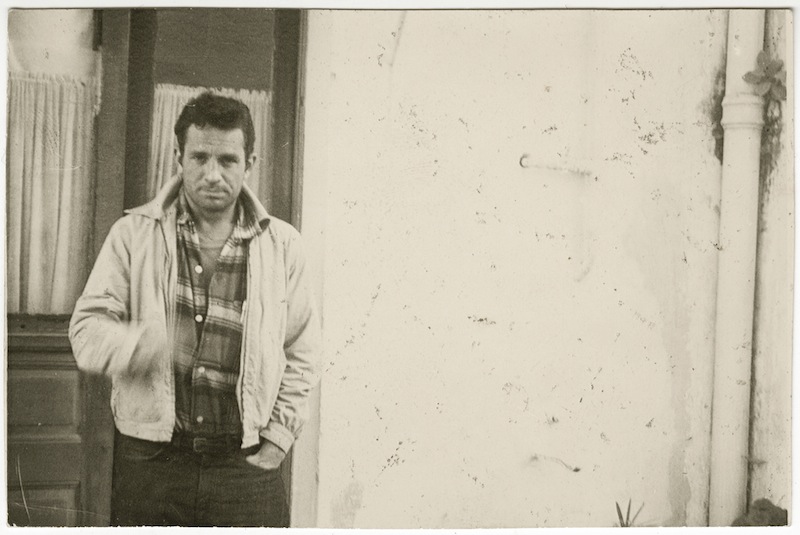
Jack Kerouac, Tangier, 1957
Silver gelatin print, 9.5 x 6.3 cm
© Estate of William S. Burroughs Courtesy of the Barry Miles Archive
Lo scrittore, poi, era affascinato dalla capacità della fotografia di interrompere il continuum spazio-temporale e di ampliare la percezione dello spettatore del mondo fisico e, utilizzando la tecnica del cut-up (immagini tagliate da diverse opere, disposte e mescolate per creare nuove opere ricche di significato), ha creato moltissimi e impegnati collage. Per lui, questi pezzi hanno funzionato come una forma di viaggio nel tempo e li costruì proprio uno a uno, immaginandosi il carattere che doveva manifestare, proprio come faceva con i personaggi delle sue storie.
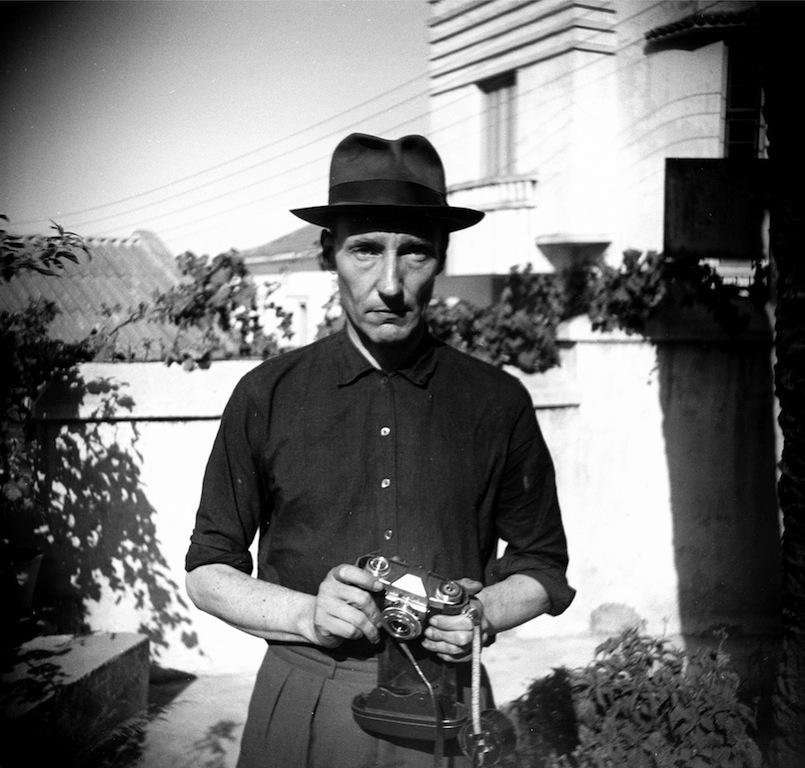
Burroughs in the Hotel Villa Mouniria Garden, Tangier Scan from negative
5.6 x 5.8 cm
© Estate of William S. Burroughs
Courtesy of the William S. Burroughs Estate
English version. William S. Burroughs (1914-1997) was an influential American novelist, essayist and artist, and a cult icon. Coinciding with the centenary of Burroughs’ birth, Taking shots is the first major exhibition worldwide to focus on his large photographic oeuvre, offering new and important insights into his artistic and creative processes.
The exhibition features over a 100 works, mainly black and white, many rarely or never before seen. These include vintage photographs, collages and assemblages alongside related ephemera such as postcards, magazine and book covers and adverts used in Burroughs’ pieces. Also included in the space is Towers Open Fire (1963), a short experimental film by Antony Balch influenced by Burroughs’ theories of the image. The title, Taking Shots, refers to photography but also to Burroughs’ well-known heroin addiction and his obsession with firearms. The photographs exhibited were mainly taken between the early 1950s and 70s in locations including London, Paris, New York and Tangier. Burroughs’ images can be loosely organised into categories including self-portraits, street scenes, intimate domestic interiors, assemblages, construction sites, and portraits of fellow writers and artists, like Jack Kerouac, Allen Ginsberg, and Brion Gysin, and friends and lovers.
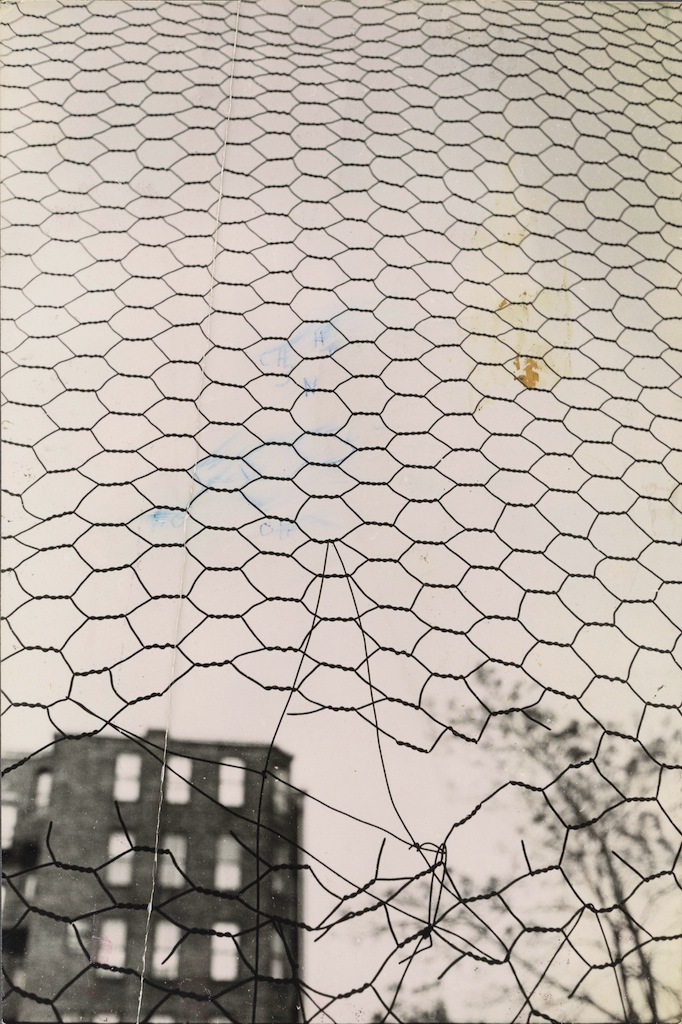
Untitled, c 1972
Silver gelatin print, 19.2 x 12.9 cm
© Estate of William S. Burroughs
Courtesy of the Henry W. And Albert A. Berg Collection of English and American Literature, The New York Public Library, Astor, Lenox and Tilden Foundations
His photographs have hitherto mainly been used to illustrate critical approaches to his work. Taking Shots repositions them as integral to an understanding of the historical and formal characteristics and concerns of Burroughs’ wider oeuvre. Burroughs used photography partly as a research tool, but also as a medium of aesthetic experimentation. Processed cheaply and treated as disposable items, many of his photographs bear markings and scratches, and most are not titled or dated. The fragmented nature of his photographic oeuvre resists a thematic or chronological layout and is reflective of his nomadic lifestyle and state of mind. Burroughs was fascinated by, what he believed to be, photography’s ability to disrupt the space-time continuum and to expand the viewer’s perception of the physical world. Using the cut-up technique – visuals cut from different works arranged and shuffled to conceive new connections and meanings between images – Burroughs created complex collages. For him these pieces functioned as a form of time travel, ones in which the camera was used to literally cut pieces from the continuum to then be repositioned and disseminated.
In a 1976 interview with J. E. Rivers, Burroughs discussed his use of photographs, noting: […] I pay a lot of attention to photographs because of characters. I’ll say, ‘Well, that picture looks something like one of my characters’, and I’ll build up a composite picture of what a character looks like. The exhibition examines these links and photography’s role in Burroughs’ wider aesthetic practices. Taking Shots is curated by Patricia Allmer, Chancellor’s Fellow in Art History at the University of Edinburgh, and John Sears, independent literary critic.

